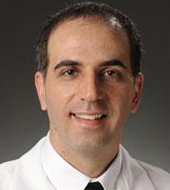小结
心动过速通常指心率不低于100次/min,它可以是一种正常的生理反应,也可以是潜在疾病的表现。[1]Page RL, Joglar JA, Caldwell MA, et al. 2015 ACC/AHA/HRS guideline for the management of adult patients with supraventricular tachycardia: a report of the American College of Cardiology/American Heart Association Task Force on Clinical Practice Guidelines and the Heart Rhythm Society. J Am Coll Cardiol. 2016 Apr 5;67(13):e27-115. https://www.sciencedirect.com/science/article/pii/S0735109715058404?via%3Dihub http://www.ncbi.nlm.nih.gov/pubmed/26409259?tool=bestpractice.com [2]Katritsis DG, Boriani G, Cosio FG, et al. European Heart Rhythm Association (EHRA) consensus document on the management of supraventricular arrhythmias, endorsed by Heart Rhythm Society (HRS), Asia-Pacific Heart Rhythm Society (APHRS), and Sociedad Latinoamericana de Estimulación Cardiaca y Electrofisiologia (SOLAECE). Europace. 2017 Mar 1;19(3):465-511. https://academic.oup.com/europace/article/19/3/465/2631183 http://www.ncbi.nlm.nih.gov/pubmed/27856540?tool=bestpractice.com 正常情况下,心率随年龄增长而变化。 婴儿正常窦房结频率每分钟处于110次至150次之间,并随年龄增长而逐渐变慢。[3]Bjerregaard P. Mean 24 hour heart rate, minimal heart rate and pauses in healthy subjects 40-79 years of age. Eur Heart J. 1983 Jan;4(1):44-51. http://www.ncbi.nlm.nih.gov/pubmed/6339245?tool=bestpractice.com
快速性心律失常分类
目前一些快速性心律失常的分类方法有助于心动过速的管理和评估。 这些分类包括:窦性和非窦性;房性和室性心律失常;窄和宽QRS复合波心动过速;规律和不规律的心律失常;以及根据心律失常的起源点分类。[1]Page RL, Joglar JA, Caldwell MA, et al. 2015 ACC/AHA/HRS guideline for the management of adult patients with supraventricular tachycardia: a report of the American College of Cardiology/American Heart Association Task Force on Clinical Practice Guidelines and the Heart Rhythm Society. J Am Coll Cardiol. 2016 Apr 5;67(13):e27-115. https://www.sciencedirect.com/science/article/pii/S0735109715058404?via%3Dihub http://www.ncbi.nlm.nih.gov/pubmed/26409259?tool=bestpractice.com
窦性与非窦性原因
窦性心动过速是心动过速的常见原因,往往被误认为心律失常。 根据P波形态和发生背景作出诊断。 由于每次心搏都起源于窦房结,所以心电图显示P波先于QRS波出现,P波电轴正常。 就绝大多数病例而言,能够发现窦性心动过速的继发性原因。 重要的是进行细致评估,以判断心动过速是否适合于临床实际状态。 窦性心动过速可误认为是其他室上性心律失常,包括房扑,特别是快速性心律失常(P波难以鉴别或心房异位灶起源于窦房结附近如接近上腔静脉或界嵴上部)。
房性与室性心律失常
心律失常是起源于心房还是心室取决于QRS波的宽窄差异和房室关系。 房性心律失常通常经由希氏-浦肯野系统传导至心室,引起窄QRS波。 当发生差异性传导(左或右束支传导阻滞)或使用减慢传导的抗心律失常药物(钠通道阻滞剂)会出现一些叠加。 如果P波可辨识,房室比例小于1,则高度提示室性心律失常,如比例大于1则很可能为房性心律失常。 房性和室性心律失常都可出现1:1房室传导关系。
窄与宽QRS波群
也可根据宽(QRS 间期>120 ms)或窄( QRS 间期<120 ms)QRS 波群心动过速进行分类。窄 QRS 波群心动过速提示顺向传导,因此心室除极经由房室结和希氏-浦肯野系统下传引起。宽 QRS 波群心动过速提示传导通过较慢的心肌细胞之间的连接所致(心室起源或房室传导经由旁路完成),这甚至也可见于窦性心律时。然而,传导异常的房性快速性心律失常可表现为宽 QRS 波群心动过速。[Figure caption and citation for the preceding image starts]: 窦性节律伴预激资料来源于医学博士 Robert W. Rho 的收集;经获准使用 [Citation ends].
 [Figure caption and citation for the preceding image starts]: 窦性心律伴预激(详细内容)资料来源于医学博士 Robert W. Rho 的收集;经获准使用 [Citation ends].
[Figure caption and citation for the preceding image starts]: 窦性心律伴预激(详细内容)资料来源于医学博士 Robert W. Rho 的收集;经获准使用 [Citation ends].
规则与不规则心律
临床上,心律规则与否易于判定。 这有助于指导心动过速的诊断。 不规则心律定义为心搏间R-R间期差异超过30ms。 一般而言,不规则窄QRS波群心律失常包括:房颤,房扑伴易变传导和多源性房性心动过速。 不规则宽QRS波群心动过速包括:房颤伴预激(快速前向传导的旁路),多形性室速和房颤,多源性房性心动过速伴差异性传导。
起源点:
按照起源部位不同,快速性心律失常可分为房性、交界区性和室性心律失常。
心房波是心房初始去极化的标志。 来源于房内单一起源点的如窦性心动过速或房性心动过速;围绕解剖学障壁的巨大折返如典型房扑;或源于多发折返波如房颤。
起源于房室交界区(房室结和/或希氏束近端)的心律失常以心室除极和逆行性心房活动(如存在)为特点,如房室结折返性心动过速或交界区异位心动过速,表现为逆行P波。
起自心室的心律失常可来源于希氏-浦肯野系统远端或心肌。 心室内起源点可进一步确定某些心律失常。 示例如右室流出道室性心动过速和束支折返性室性心动过速。 在鉴别房性和室性心律失常方面,血流动力学稳定性并不可靠。 某些室性心动过速病例开始时血流动力学稳定,耐受良好。 误诊和处理不当(如应用钙通道阻滞剂)可带来灾难性后果。
当评估宽 QRS 波群心动过速患者而不能确定诊断时,必须先按照室性心动过速处理,直到明确诊断为其他心律失常。
流行病学
窦性心动过速是心动过速最常见的类型,通常是对心理或躯体刺激的正常生理反应。
房颤是临床实践中最常见的心律失常,一般人群中估计的患病率是 0.5%-1%,并随年龄增长而升高。[4]Go AS, Hylek EM, Phillips KA, et al. Prevalence of diagnosed atrial fibrillation in adults: national implications for rhythm management and stroke prevention: the AnTicoagulation and Risk Factors in Atrial Fibrillation (ATRIA) Study. JAMA. 2001 May 9;285(18):2370-5. http://jama.ama-assn.org/cgi/reprint/285/18/2370 http://www.ncbi.nlm.nih.gov/pubmed/11343485?tool=bestpractice.com [5]January CT, Wann LS, Alpert JS, et al; ACC/AHA Task Force Members. 2014 AHA/ACC/HRS guideline for the management of patients with atrial fibrillation: executive summary: a report of the American College of Cardiology/American Heart Association Task Force on practice guidelines and the Heart Rhythm Society. Circulation. 2014 Dec 2;130(23):2071-104. http://www.onlinejacc.org/content/64/21/2246 http://www.ncbi.nlm.nih.gov/pubmed/24682348?tool=bestpractice.com [6]Stewart S, Hart CL, Hole DJ, et al. Population prevalence, incidence, and predictors of atrial fibrillation in the Renfrew/Paisley study. Heart. 2001 Nov;86(5):516-21. https://www.doi.org/10.1136/heart.86.5.516 http://www.ncbi.nlm.nih.gov/pubmed/11602543?tool=bestpractice.com [7]Murdoch DL, O'Neill K, Jackson J, et al. Are atrial fibrillation guidelines altering management? A community based study. Scott Med J. 2005;50:166-169. http://www.ncbi.nlm.nih.gov/pubmed/16374981?tool=bestpractice.com 年龄在80岁以上的患者心房颤动的患病率高达9%。[4]Go AS, Hylek EM, Phillips KA, et al. Prevalence of diagnosed atrial fibrillation in adults: national implications for rhythm management and stroke prevention: the AnTicoagulation and Risk Factors in Atrial Fibrillation (ATRIA) Study. JAMA. 2001 May 9;285(18):2370-5. http://jama.ama-assn.org/cgi/reprint/285/18/2370 http://www.ncbi.nlm.nih.gov/pubmed/11343485?tool=bestpractice.com [8]Murphy NF, Simpson CR, Jhund PS, et al. A national survey of the prevalence, incidence, primary care burden and treatment of atrial fibrillation in Scotland. Heart. 2007 May;93(5):606-12. https://www.doi.org/10.1136/hrt.2006.107573 http://www.ncbi.nlm.nih.gov/pubmed/17277353?tool=bestpractice.com 随着人口老龄化趋势,房颤患病数量将明显增加。
房扑的发病率是88/100 000人年。 男性较多见,并常见于心力衰竭或COPD患者。 房扑也随年龄增长而上升。[9]Granada J, Uribe W, Chyou P, et al. Incidence and predictors of atrial flutter in the general population. J Am Coll Cardiol. 2000 Dec;36(7):2242-6. http://www.ncbi.nlm.nih.gov/pubmed/11127467?tool=bestpractice.com 据估测,其患病率高出阵发性室上性心动过速(PSVT)2.5倍。
PSVT是间歇性室上性心动过速(房室结折返性心动过速,房室折返性心动过速,或房性心动过速),发病率为36例/100 000人年,患病率是2.29例/1000人。[10]Orejarena L, Vidaillet HJ, DeStefano F, et al. Paroxysmal supraventricular tachycardia in the general population. J Am Coll Cardiol. 1998 Jan;31(1):150-7. http://www.ncbi.nlm.nih.gov/pubmed/9426034?tool=bestpractice.com 女性的 PSVT 患病率为女性的两倍,而 65 岁以上人群的发病率为更年轻人群的 5 倍。绝大多数室上速患者属于房室结折返性心动过速(占 60%),其余为房室折返性心动过速(30%)和房性心动过速(10%)。[11]Trohman RG. Supraventricular tachycardia: implications for the intensivist. Crit Care Med. 2000 Oct;28(10 Suppl):N129-35. http://www.ncbi.nlm.nih.gov/pubmed/11055681?tool=bestpractice.com
不适当窦性心动过速的患病率并不十分清楚,其潜在机制很可能涉及多因素,但患者年纪经常较年轻(15-50 岁),以女性常见。[1]Page RL, Joglar JA, Caldwell MA, et al. 2015 ACC/AHA/HRS guideline for the management of adult patients with supraventricular tachycardia: a report of the American College of Cardiology/American Heart Association Task Force on Clinical Practice Guidelines and the Heart Rhythm Society. J Am Coll Cardiol. 2016 Apr 5;67(13):e27-115. https://www.sciencedirect.com/science/article/pii/S0735109715058404?via%3Dihub http://www.ncbi.nlm.nih.gov/pubmed/26409259?tool=bestpractice.com [2]Katritsis DG, Boriani G, Cosio FG, et al. European Heart Rhythm Association (EHRA) consensus document on the management of supraventricular arrhythmias, endorsed by Heart Rhythm Society (HRS), Asia-Pacific Heart Rhythm Society (APHRS), and Sociedad Latinoamericana de Estimulación Cardiaca y Electrofisiologia (SOLAECE). Europace. 2017 Mar 1;19(3):465-511. https://academic.oup.com/europace/article/19/3/465/2631183 http://www.ncbi.nlm.nih.gov/pubmed/27856540?tool=bestpractice.com [12]Brady PA, Low PA, Shen WK. Inappropriate sinus tachycardia, postural orthostatic tachycardia syndrome, and overlapping syndromes. Pacing Clin Electrophysiol. 2005 Oct;28(10):1112-21. http://www.ncbi.nlm.nih.gov/pubmed/16221272?tool=bestpractice.com
室性心动过速的患病率高度依赖其类型和间期。 既往有心肌梗死史的患者中,持续性单形性室速的发病率取决于梗死面积和整体左室功能。
鉴别诊断
常见
- 窦性心动过速
- 急性心房纤颤动
- 慢性心房颤动
- 心房扑动
- 房性心动过速
- 房室结折返性心动过速
- 房室折返性心动过速/Wolff-Parkinson-White综合征
- 多形性房性心动过速
- 交界性异位心动过速
- 单形性室性心动过速伴既往心肌梗死
- 单形性室性心动过速伴非缺血性心肌病
- 心室颤动
- 多形性室性心动过速伴QT间期正常
- 特发性室性心动过速:心脏结构正常
不常见
- 窦房结折返性心动过速
- 不适宜的窦性心动过速
- 永久性交界区折返性心动过速
- 尖端扭转型室性心动过速
- 双向室性心动过速
- 加速性心室自主心律
撰稿人
作者
Ramin Shadman, MD, FACC

Attending Physician
Southern California Permanente Medical Group
Assistant Professor of Medicine
UCLA
Los Angeles
CA
利益声明
RS declares that he has no competing interests.
Robert W. Rho, MD, FACC

Attending Physician
Seattle
WA
利益声明
RWR is an author of a reference cited in this topic.
同行评议者
Mark M. Gallagher, BSc, MD
Consultant Cardiologist and Electro-physiologist
St George's Hospital
London
UK
利益声明
MMG declares that he has no competing interests.
Fred Kusumoto, MD
Associate Professor of Medicine
Cardiovascular Diseases
Mayo Clinic
Jacksonville
FL
利益声明
FK declares that he has no competing interests.
Zachary D. Goldberger, MD
Cardiology Fellow
University of Michigan Health System
Ann Arbor
MI
利益声明
ZDG declares that he has no competing interests.

指南
- 2022 年 ESC 室性心律失常患者管理和心源性猝死预防指南
- 心房颤动:诊断和管理
更多 指南患者教育信息
何为心房颤动?
心房颤动:如何有效治疗?
更多 患者教育信息登录或订阅即可浏览 BMJ Best Practice 临床实践完整内容
内容使用需遵循免责声明